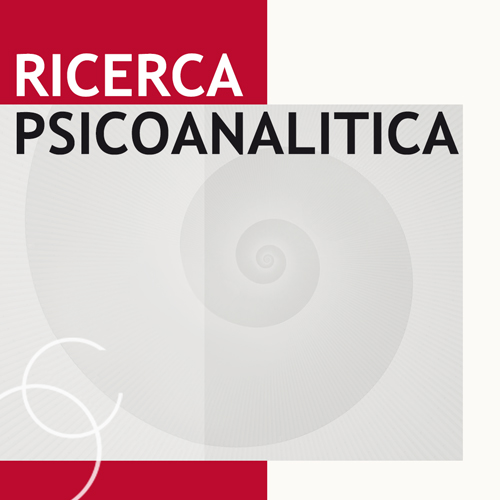Dialogo Aperto - un nuovo approccio psicoterapeutico e orientato ai diritti umani per costruire servizi psichiatrici umanistici

All claims expressed in this article are solely those of the authors and do not necessarily represent those of their affiliated organizations, or those of the publisher, the editors and the reviewers. Any product that may be evaluated in this article or claim that may be made by its manufacturer is not guaranteed or endorsed by the publisher.
I servizi di salute mentale dovrebbero garantire un aiuto immediato nelle crisi incluse quelle in corso. Agendo in questo modo, Dialogo Aperto (Open Dialogue) ha spostato l'attenzione verso un ascolto sensibile della voce del paziente e di coloro a lui/lei più vicini piuttosto che guardare alla psicopatologia. Nelle crisi più severe, incluse quelle psicotiche, i risultati documentati sono eccezionali e sono ottenuti con un uso decisamente inferiore di farmaci. In questo lavoro l'obiettivo principale è descrivere come generare dialogo negli incontri aperti con il team di esperti, la persona al centro dell'interesse e i membri della famiglia presenti, mobilitando così le loro risorse psicologiche per il recupero.
Aaltonen, J., Seikkula, J., & Lehtinen, K. (2011). Comprehensive open-dialogue approach I: Developing a comprehensive culture of need-adapted approach in a psychiatric public health catchment area the Western Lapland Project. Psychosis, 3, 179-191. DOI: https://doi.org/10.1080/17522439.2011.601750
Alanen, Y. (1997). Schizophrenia. Its origins and need-adapted-treatment. London: Karnac Books.
Alanen, Y., Lehtinen, K., Räkköläinen, V. & Aaltonen, J. (1991). Need-adapted treatment of new schizophrenic patients: experiences and results of the Turku Project. Acta Psychiatrica Scandinavica, 83, 363-372. DOI: https://doi.org/10.1111/j.1600-0447.1991.tb05557.x
Andersen, T. (1991). The reflecting team: dialogues and dialogues about the dialogues. New York, NY: Norton.
Andersen, T. (1995). Reflecting processes; acts of forming and informing. In Friedman, S. (Ed.). The reflecting team in action (pp. 11-37) New York, NY: Guilford.
Anderson, H., & Goolishian, H. (1988). Human systems as linguistic systems: Preliminary and evolving ideas about the implications for clinical theory. Family Process, 27, 371-393. DOI: https://doi.org/10.1111/j.1545-5300.1988.00371.x
Bakhtin, M. (1975). Speech genres and other late essays. Austin: University of Texas Press.
Bakhtin, M. (1984). Problems of Dostojevskij"s poetics: Theory and history of literature (Vol. 8). Manchester: Manchester University Press. DOI: https://doi.org/10.5749/j.ctt22727z1
Bergström, T., Seikkula, J., Alakare, B., Mäki, P., Köngäs-Saviaro, P., Taskila, J. J., Tolvanen, T., & Aaltonen, J. (2018). The family-oriented Open Dialogue approach in the treatment of first-episode psychosis: Nineteen-year outcomes. Psychiatry Research, 270, 168-175. doi:10.1016/j.psychres.2018.09.039. DOI: https://doi.org/10.1016/j.psychres.2018.09.039
Buus, N., Jacobsen, E., Bojesen, A. & Erlangen, A. (2019). The association between Open Dialogue to young Danes in acute psychiatric crisis and their use of health care and social services: A retrospective register-based cohort study. International Journal of Nursing Studies, 91, 119-127. doi:10.1016/j.ijnurstu.2018.12.015. DOI: https://doi.org/10.1016/j.ijnurstu.2018.12.015
Haarakangas, K. (1997). Hoitokokouksen äänet. The voices in treatment meeting. A dialogical analysis of the treatment meeting conversations in family-centred psychiatric treatment process in regard to the team activity. English Summary. Jyväskylä Studies in Education, Psychology and Social Research, 130, 119-126.
Pope, L. G., Cubellis, L., & Hopper, K. (2016). Signing on for dirty work: Taking stock of a public psychiatry project from the inside. Transcultural Psychiatry, 53(4), 506-526. DOI: https://doi.org/10.1177/1363461516655947
Putman, N. (2015). What constitutes an open dialogue training? Education, education, education. Context, (138), 34-35.
Schubert, S., Rhodes, P. & Buus, N. (2020). Transformation of professional identity: an exploration of psychologists and psychiatrists implementing Open Dialogue. Journal of Family Therapy, First published: 23 January 2020. doi:10.1111/1467-6427.12289. DOI: https://doi.org/10.1111/1467-6427.12289
Seikkula, J. (2019). From research on dialogical practice to dialogical research: Open Dialogue is based on all the time ongoing scientific analysis. In Ochs, M., Borcsa, M., & Schweitzer, J. (Eds.) Linking systemic research and practice - innovations in paradigms, strategies and methods. (European Family Therapy Association Series, Volume 4). Cham: Springer International. DOI: https://doi.org/10.1007/978-3-030-36560-8_9
Seikkula, J., Aaltonen, J., Alakare, B., Haarakangas, K., Keränen, J., & Sutela, M. (1995). Treating psychosis by means of Open Dialogue. In Friedman, S. (Ed.), The reflective team in action: Collaborative practice in family therapy (pp. 62-80). New York, NY: Guilford Press.
Seikkula, J., Alakare, B., & Aaltonen, J. (2001). Open Dialogue in psychosis II: A comparison of good and poor outcome cases. Journal of Constructivist Psychology, 14, 267-284. DOI: https://doi.org/10.1080/107205301750433405
Seikkula, J. Karvonen, A., Kykyri, V-L, Penttonen, M. & Nyman-Salonen, P. (2018). The relational mind in couple therapy: a Bateson-inspired view of human life as an embodied stream. Family Process, 57, 855-866. doi:10.1111/famp.12382. DOI: https://doi.org/10.1111/famp.12382
Seikkula, J. & Trimble, D. (2005). Healing elements of therapeutic conversation: Dialogues as an embodiment of love. Family Process, 44(3), 463-477. DOI: https://doi.org/10.1111/j.1545-5300.2005.00072.x
Shotter J. (1993). Cultural politics of every day life. Social constructionism, rhetoric and knowing of the third kind. Buckingham, UK: Open University Press.
Speck, R., & Attneave, C. (1973). Family networks. New York: Pantheon.
Stockmann, T., Wood, L., Enache, G., Withers, F., Gavaghan, L., & Razzaque, R. (2017). Peer-supported Open Dialogue: a thematic analysis of trainee perspectives on the approach and training. Journal of Mental Health, 1-7. doi:10.1080/09638237.2017.1340609. DOI: https://doi.org/10.1080/09638237.2017.1340609
Trimble, D. (2000). Emotion and voice in network therapy. Netletter, 7(1), 10-15. Retrieved: July 10, 2004, from: http://www.netletter.org
Tschudi, F., & Reichelt, S. (2004). Conferencing when therapy is stuck. Journal of Systemic Therapies, 23, 38-52. DOI: https://doi.org/10.1521/jsyt.23.1.38.29398
van der Kolk, B.A., McFarlane, A.C., & Weisaeth, L. (Eds.) (2006). Traumatic stress. New York, NY: Guilford.
Van der Velden, E., Halevy-Martini, J., Ruhf, L., & Schoenfeld, P. (1984). Conceptual issues in network therapy. International Journal of Family Therapy, 6, 68-81. DOI: https://doi.org/10.1007/BF00924443
PAGEPress has chosen to apply the Creative Commons Attribution NonCommercial 4.0 International License (CC BY-NC 4.0) to all manuscripts to be published.


 https://doi.org/10.4081/rp.2021.529
https://doi.org/10.4081/rp.2021.529





